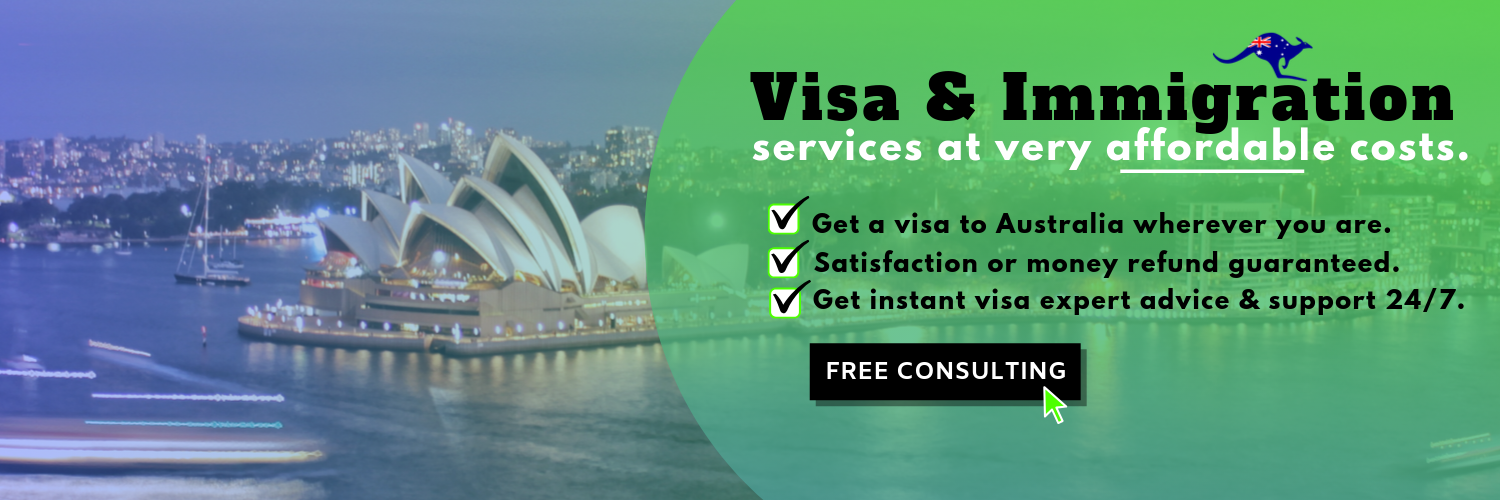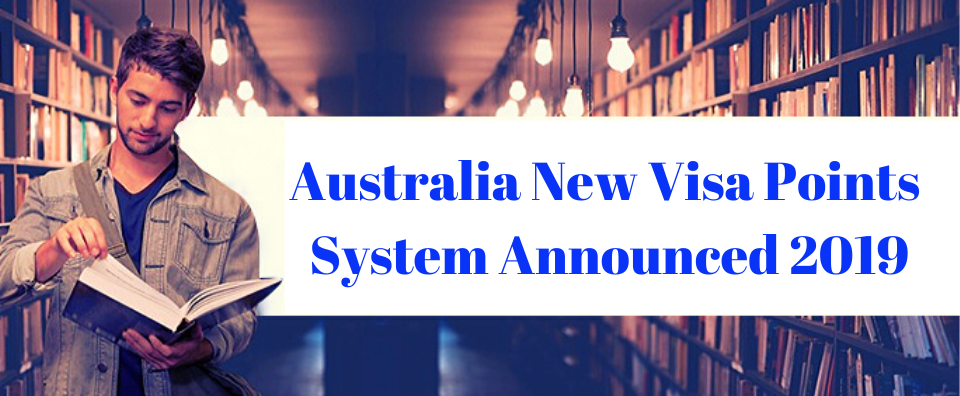How To Get PR in Australia With Student Visa?

How to Migrate Easily to Australia?
December 3, 2019
Top Advantages & Disadvantages of Studying Abroad
December 19, 2019
Australia lies at number three in the list of most popular student destinations in the world. With its courses gaining global recognition, the reputation of Australian universities and educational institutions has gained massive momentum. The diverse education options are also a major attraction for the students. Here are some more insights about Australia’s student visa. Â
Australia Student Visa (Subclass 500)
The Subclass 500 Student Visa for Australia allows applicants to participate in an eligible study course in Australia. It also gives them an opportunity to work for 40 hours in two week’s time frame once their course begins. The cost of this visa is around AU$ 620.Â
If you are planning to gain permanent residence in Australia after you study, you must pick up courses that have higher chances of getting you a PR.Â
To find such a course, you must look at the job status of the country. See what jobs are easily available, which are most popular and which pay the best. Then based on your interests, pick the courses mindfully.Â
You can also have a look at the Skilled Occupation List or SOL for General Skilled Migration. This list contains all the occupations that are eligible for a PR. Find an occupation that interests you and then select your course accordingly.Â
Let us have a look at some further requirements for a student visa.
How Much PTE Score Required for Australia Student Visa
PTE Academic or Pearson Test of English Academic is one of the most common English language tests preferred by students to showcase their English language competency. The score requirements for every student may vary depending upon the institution they want to get enrolled in but in general, a minimum score of 42 is required in PTE Academic for Australia Student Visa.
If you are planning to take an English Language Intensive Courses for Overseas Students (ELICOS) for 10 weeks in Australia then the minimum score requirement is 36.Â
If you are planning to take an English Language Intensive Courses for Overseas Students (ELICOS) for 20 weeks in Australia then the minimum score requirement is 30. Â
How Many Bands Required for Australia Student Visa in IELTS?
International English Language Testing System or IELTS is another popular test given by students in order to become eligible for applying for a student visa for Australia. The minimum band required for Australia student visa is 5.5.
If you are planning to take an English Language Intensive Courses for Overseas Students (ELICOS) for 10 weeks in Australia then the minimum band requirement is 5.Â
If you are planning to take an English Language Intensive Courses for Overseas Students (ELICOS) for 20 weeks in Australia then the minimum band requirement is 4.5.
Australia Student Visa Processing Time After Medical 2019
The processing times for Australia student visa varied depending upon the sector in which you are applying for the visa. There can be further chances of delay in the processing of visa if the applicant has not filled the information correctly, more time is being taken in the verification of the information or there are some missing documents. Here is a table that will give you all the processing times for Australia student visa in a nutshell.
| Education Sector | 75% of Applications Take | 95% of Applications Take |
| Foreign Affairs or Defence Sector | 12 Days | 24 Days |
| Postgraduate Research Sector | 63 Days | 5 Months |
| Non-Award Sector | 4 Days | 13 Days |
| Schools Sector | 61 Days | 4 Months |
| Independent ELICOS Sector | 27 Days | 42 Days |
| Vocational Education and Training Sector | 45 Days | 73 Days |
| Higher Education Sector | 40 Days | 54 Days |
Pathways to Permanent Residence in Australia With Student VisaÂ
The student visa for Australia allows you to stay in the country for not more than 5 years. So, if you want to live permanently in the country you need to apply for some other visa. Here are some pathways that you can follow later on to get permanent residence in Australia.Â
General Skilled MigrationÂ
GSM or General Skilled Migration is a visa program that allows international students in Australia to gain a visa for PR. GSM is a points-based system in which the applicant must get a particular score in order to apply for a visa on the basis of a chosen occupation.Â
The minimum point requirement for Skilled Visa Migration is 65. Although the score varies depending upon the occupation. Under this category, there are FOUR different visa pathways. Here are some of the common requirements for these visa categories.
Study Requirements – You must have studied for two years or more in Australia. This means the minimum course length should be two years. Distance education courses are not eligible in this case.
Work Requirements -Â If you are working at least 20 hours a week under your nominated occupation then the work experience would count. Otherwise, you would get no points for employment.
English Requirements – No matter how much you scored to get Australia student visa, Competent English level is required for a skilled migration visa. This means a score of at least 6 bands in IELTS and 50 in PTE Academic.
Selection of Occupation – The occupation that you want to pursue in Australia must be on the skilled occupation list of your visa.
Skill Assessment – Applicants are required to complete the Migration Skill Assessment Process and receive a positive result. Skill assessment is required in almost all three visa applications except the Skilled Regional Visa.
1. Skilled Independent Visa (Subclass 189)
This is the best option in case the student does not have sponsorship from an employer or state nomination. You must have an invitation to apply for this visa, a positive skill assessment and must satisfy the points requirements for visa 189.
2. Employer-Sponsored Visa (Subclass 186)
If you have an employer nomination, then you can apply for this visa. In case you are not eligible for a skilled migration visa, you should seek this one. Here, you will first have to get a temporary visa, work under the employer that has sponsored you for at least three years and then apply for permanent residency. If you already have three-year work experience then you can apply straight away for the employer-sponsored visa.
3. Skilled Nominated Visa (Subclass 190)
In this visa category, you need a nomination from an Australian state or territory government. You must satisfy the points test, have relevant skills assessment with a competent English level.
4. Skilled Regional Visa (Subclass 887)Â
This is a 4-year provisional visa that allows you to gain permanent residency after 2 years of working in Australia. You must have at least 1 year of full-time work experience in the eligible regional areas. Students might require a bridging visa before applying for this visa.
What If You Are Not Eligible For Permanent Residency Yet?
Students can extend their stay, after their Australia student visa expires, on a temporary basis so that they can gain some work experience or study further and hence become eligible to apply for PR. Here are a few options that you can explore.
1. Post Study Work Visa or Temporary Graduate Visa (Subclass 485)
For those who do not have enough points for a skilled migration visa or have no nomination from an employer or state government, a post-study work visa is a good option. Seek a temporary graduate visa after your student visa for Australia expires and find 18 months’ time to work and study further in the country. You can utilize this time working for your current employer, increasing your work experience, gaining skills or enhancing your English language. Once you are eligible, apply for permanent residence in Australia.
 2. Tourist Visa or Visitor Visa (Subclass 600)
Depending upon how much time you want from three, six or 12 months, you can get a tourist visa and utilize this time deciding about getting a PR, meeting its requirements or simply travelling the country.
3. Work Holiday Visa (Subclass 417)
If you want to work and travel in Australia for around 12 months, this visa is a great option for you. Although the visa application window opens for a particular time for this visa, you can see if you get a chance to apply.
4. Bridging Visa
A bridging visa is a temporary visa that allows you to stay in Australia for some time until your visa application results are received. So when your student visa for Australia is expiring, you can apply for a bridging visa. This visa will end once you will receive a result for your new visa. Bridging visa also allows you to travel overseas.
So these are the best ways in which you can get PR in Australia with a student visa. However, this is just for your information. The exact procedures for each category of visa may vary. Hence, students must check the requirements and eligibility for each visa category before making a selection. You must also see the complete process of getting PR in Australia. Hope this information will get you to the right path to obtain permanent residency. Â





